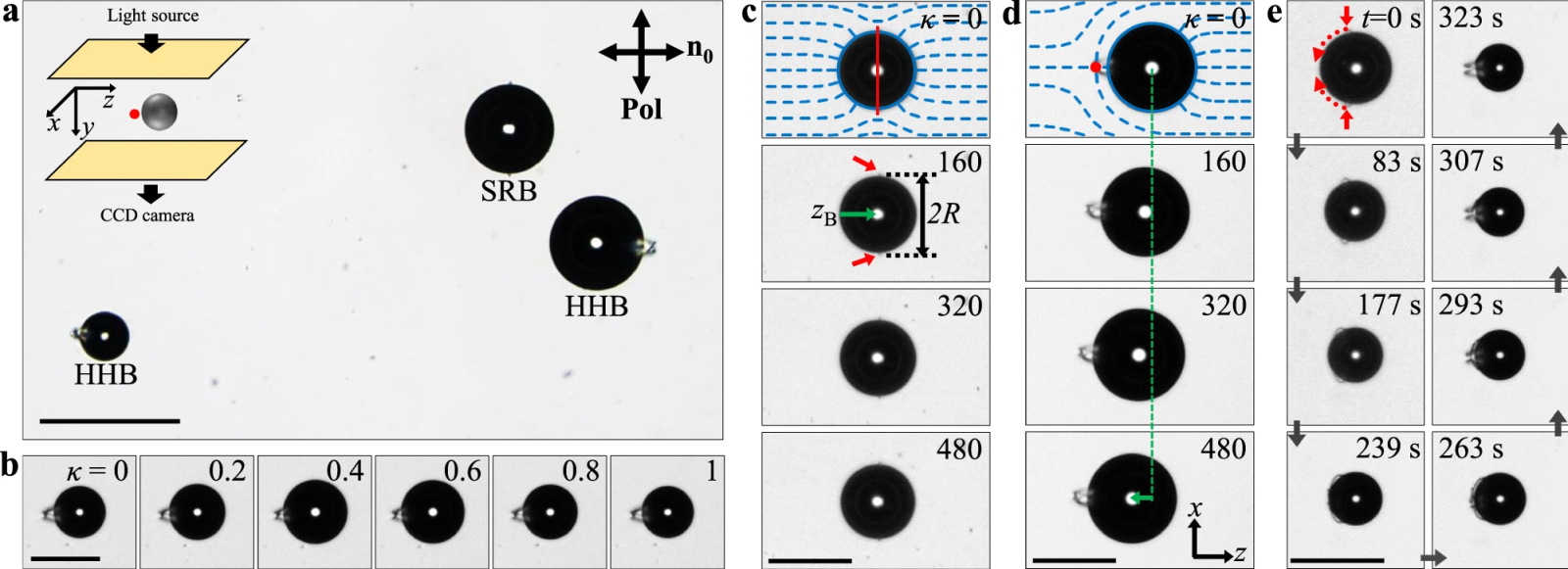Discovery of a new principle of motion in liquid crystals
Published by Cédric,
Article author: Cédric DEPOND
Source: Nature Communications
Other Languages: FR, DE, ES, PT
Article author: Cédric DEPOND
Source: Nature Communications
Other Languages: FR, DE, ES, PT
Follow us on Google News (click on ☆)

Optical microscopy images displaying bubbles with nematic liquid crystal configurations (NLC), observed under polarized light. The bubbles contain specific defects, hyperbolic-hedgehog (HH) and Saturn ring (SR). A sequence illustrates a pulsating HH bubble under pressure modulation, with stroboscopic observations detailing the movement and transformations of configurations.
During their experiments, the researchers observed a remarkable phenomenon: air bubbles within the liquid crystal moved directionally by periodically changing their size. Unlike air bubbles in other media, which generally exhibit symmetric growth or contraction, these exhibited unilateral movement. By introducing air bubbles the size of a human hair into the liquid crystal and adjusting the pressure, the researchers were able to highlight this surprising observation.
The key to this phenomenon lies in the formation of phase defects near the air bubbles within the liquid crystal structure. These defects disrupt the symmetry of the bubbles, enabling them to undergo a unidirectional force despite their symmetric shape. Thus, as the air bubbles change size, they exert a force on the surrounding liquid crystal, propelling them in a coherent direction, in contradiction to classical physical laws.
Sung-Jo Kim, the lead author of the study, emphasized the importance of this discovery: "This revolutionary phenomenon demonstrates that symmetrical objects can exhibit directed motion through symmetrical actions, which is a completely novel discovery." He also mentioned that this principle could have applications in many other complex fluids, beyond liquid crystals.
Professor Jeong added: "This discovery highlights the significance of symmetry-breaking in generating motion at the microscopic scale, and opens new perspectives for research on microscopic robots."